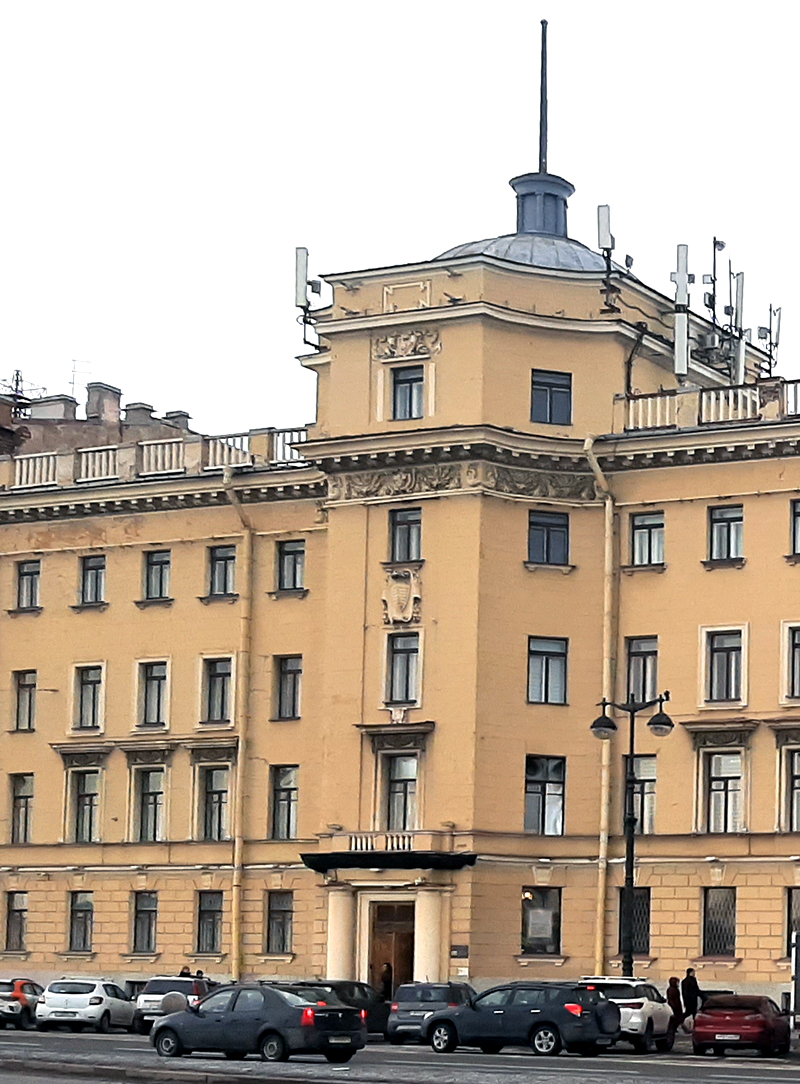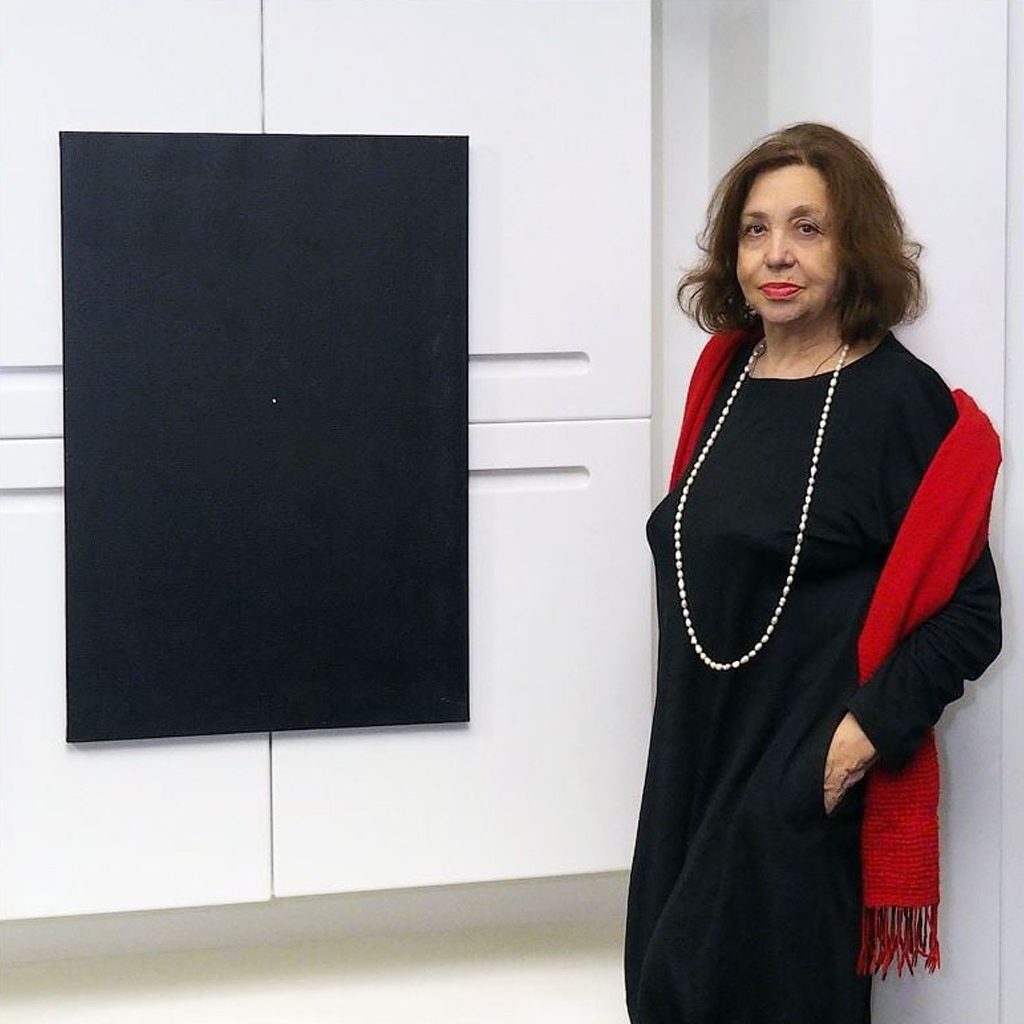 The origins of the Diaghilev Museum of Contemporary Art at St. Petersburg State University were laid by the activities and collection of the "Diaghilev Art Centre", a non-profit cultural organization, established in 1990 "for the purpose of preserving, creating, distributing, and mastering cultural values both in Russia and abroad, for the revival of the traditions of S. Diaghilev and the support and promotion of all forms of national culture within the country and abroad". The name and artistic aspirations of Sergei Diaghilev, a graduate of the Faculty of Law of St. Petersburg University, a brilliant curator and producer of grandiose projects (first of all, the "Russian Seasons") determined the direction of the development of the art-centre and the museum for the next 30 years.
The origins of the Diaghilev Museum of Contemporary Art at St. Petersburg State University were laid by the activities and collection of the "Diaghilev Art Centre", a non-profit cultural organization, established in 1990 "for the purpose of preserving, creating, distributing, and mastering cultural values both in Russia and abroad, for the revival of the traditions of S. Diaghilev and the support and promotion of all forms of national culture within the country and abroad". The name and artistic aspirations of Sergei Diaghilev, a graduate of the Faculty of Law of St. Petersburg University, a brilliant curator and producer of grandiose projects (first of all, the "Russian Seasons") determined the direction of the development of the art-centre and the museum for the next 30 years.
In 1990, the idea of creating Diaghilev Art Centre was realized by Tatiana Semenovna Yurieva (1943–2021), an art critic and an Americanist, who had previously taught the history of art and criticism at the St. Petersburg Academy of Arts for about 20 years. The main activities of the Centre were stated as follows: "museum practice and collecting; organization and holding of exhibitions, festivals, fairs, and auctions with the demonstration and sale of works of art; conducting art history, theater, literary, and artistic seminars, symposiums, and conferences; creation and operation of creative workshops and clubs; exchange of delegations and specialists in the field of culture and art".
In S. Diaghilev’s footsteps, but during another critical epoch, T. Yurieva, the general director of the centre, became one of the first Russian curators of a new type. She was, as described by Adrian George, connecting different worlds, collecting works of art around artistic or historical themes or uniting groups of artists. The Centre’s projects were to eliminate the severed cultural ties between Russia and Western countries (especially the Russian Expatriates), between the contemporary art (1980—1990s) and the art of the Russian Silver Age and the Avant-garde (the first third of the 20th century). The Diaghilev Art Centre organized dozens of exhibitions of Leningrad nonconformists, both collective and personal, in St. Petersburg, Moscow, and abroad, discovering new names in the contemporary art world. The so-called Diaghilev Circle included more than 50 artists, recognized today as the gurus of Russian contemporary art (Zaven Arshakuni, Gleb Bogomolov, Levon Lazarev, Vyacheslav Mikhailov, Valery Lukka, Vladimir Ovchinnikov, Evgeny Ukhnalev, Felix Volosenkov, etc.).
 The documents from the funds of the Diaghilev Museum of Contemporary Art (signed agreement of intent) indicate that the issue of creating the museum was discussed and agreed upon with the Saint-Petersburg University back in early 1999. By 2001, the Diaghilev Centre received accommodation at the Philology Department located on the Lieutenant Schmidt embankment, 11/2.
The documents from the funds of the Diaghilev Museum of Contemporary Art (signed agreement of intent) indicate that the issue of creating the museum was discussed and agreed upon with the Saint-Petersburg University back in early 1999. By 2001, the Diaghilev Centre received accommodation at the Philology Department located on the Lieutenant Schmidt embankment, 11/2.
Since 2008, the art collection of the Centre was gradually transferred to the university, and the Centre itself was transformed into a museum. Those changes entailed the proposal of the development of the new type of a museum, which would have a special joint creativity program for teachers and students. The museum collection, according to its director, is a small model of the world which helps a person to navigate, adapt to reality, and solve not only scientific problems, but also philosophical ones. The life of the Diaghilev Museum of Contemporary Art at the University is about the present, but it is constantly turned towards the future. Such a museum is unique for Russia, for it carries not just a university and educational status, but also has a constantly replenished collection of modern art, thanks to the authority of the university and the creators of the museum.
The museum is a unique platform for scientific experiments and research based not only on exhibition material, but also on conferences regularly held by the museum together with the university faculties. Among them one can mention "Culture of the Russian Abroad 1990–2000″ (2013); "Terror and Culture" (2014); Baltic Biennials I — IV (since 2005); "Known and Unknown Discoveries of the 20th Century" (2013); "Ruin, Fragment, Crystal: About the Whole and the Unified in Modern Theory and Practice of Art" (2015); "China — Russia — the USA. Three Poles of a Multipolar World" (2016–2019); "The Muses of Hong Kong" (2018); Exhibition of Contemporary Chinese Art "From Generation to Generation" (2019); "Amanita Festival" (2019) etc.
Since 2008, the Museum has acquired its present name and, in 2017, the universities, as scientific and educational institutions, received the legal right to carry out museum activities as well.
The exhibition and conference projects were combined with museum functions to acquire, conserve, research, communicate, and exhibit the heritage for the purposes of education, study and enjoyment (ICOM, 2007).
Since 2021, the university has become a member of the Union of Russian museums. This opens up the new prospects for the Diaghilev Moscow Art Institute and other museums (historical and scientific) within the university. Since St. Petersburg is very rich in world-class art collections and has a unique urban art culture, the connection between the collections of museums of various types, as well as the principles of education of art historians and curators, still remains an important topic that gives great prospects for both the university and the museum.
Yurieva, Tatiana; Staniukovich-Denisova, Ekaterina; Ershov, Gleb.
Curatorial Approaches at the Diaghilev Museum of Contemporary Art at Saint-Petersburg State University: Representations of Art in Synchronous and Diachronic Aspects,
in Actual Problems of Theory and History of Art: Collection of articles, vol. 11.
St. Petersburg: St. Petersburg Univ. Press, 2021, pp. 827–835. ISSN 2312-2129.
Please use this identifier to cite or link to this item.

 English (United Kingdom)
English (United Kingdom)  Russian (Russia)
Russian (Russia) 